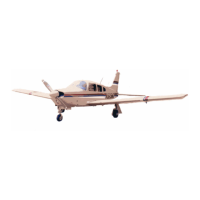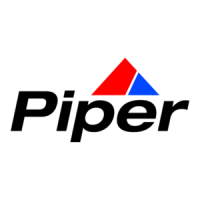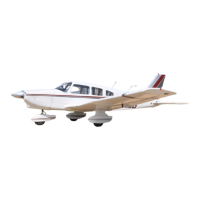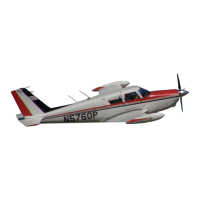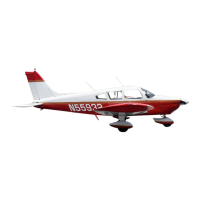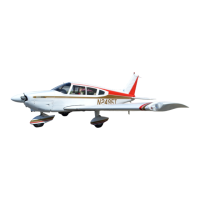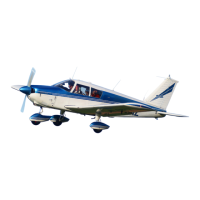LANCE II SERVICE MANUAL
2-6. ACCESS AND
INSPECTION PROVISIONS. The
access and inspection provisions
for the airplane are
shown in Figure 2-5. The component
to be serviced or inspected through
each opening
is identified in the illustration. All access
plates and panels are secured by either
metal fasteners or screws. To enter the aft section of the fuselage, open the baggage
compartment door
and remove the access
panel.
CAUTION
Before entering
the aft section of
the fuselage, be sure the
airplane
is supported at
the tail skid.
2-7.
TOOLS AND TEST
EQUIPMENT.
Because of the simplicity
and easy accessibility
of
components,
few special tools outside normal shop
tools will be required. Tools that
are
required
may be fabricated
from dimensions
given in the back of
the section that pertains
to a
particular component or are listed in the back of the PA-32RT-300 AND PA-32RT-300T
Parts Catalog.
2-8.
TORQUE REQUIREMENTS. The torque
values given in Table II-II are derived
from
oil-free cadmium-plated threads and are recommended for all airframe installation procedures
where torquing is required, unless otherwise noted in sections where other values are
stipulated. Engine torque
values are found in the latest revision
of Avco-Lycoming Service
Bulletin No. 268, and propeller
torque values are found in Section
VIII or VIIIA of this
manual.
a. Unless otherwise
specified. torque
all nuts to
the applicable
torque in the
Recommended Torque
Chart. If the nut (or the bolt) is listed
but not its mating fastener, use
the lower torque specified for the listed nut (or bolt).
NOTE
If normal operation
requires movement between
any of the
components being clamped together, tighten the nut (or bolt)
without regard to the nut torque chart, to insure intended
operation of the assembly.
b. Bolt and
nut threads should
be clean and dry
unless otherwise
specified. If the threads
are to be lubricated and no
torque is specified, reduce the recommended
nut torque (plus the
friction drag torque) by 50%.
c. For thread sizes
10 through 7/16, add the friction
drag torque for all self-locking
fasteners
as specified in the friction drag torque
table. For non self-locking fasteners,
assume
the friction drag torque to be zero.
d. For
other bolt sizes,
determine the friction
drag torque
by turning the nut
to near
contact
with the bearing surface. Attach a
scale type torque wrench to the nut and
determine
the torque required to turn
the nut on the bolt (before the nut makes
contact with the bearing
surface). Add
this, the friction drag torque, to the
specified torque to get the finaltorque.
NOTE
If the bolt is stationary and the nut is torqued, use the lower
side of the torque range. If the nut is stationary and the bolt is
torqued, use the higher side of the torque range.
HANDLING
AND
SERVICING
Revised: 10/3/80 1B1

